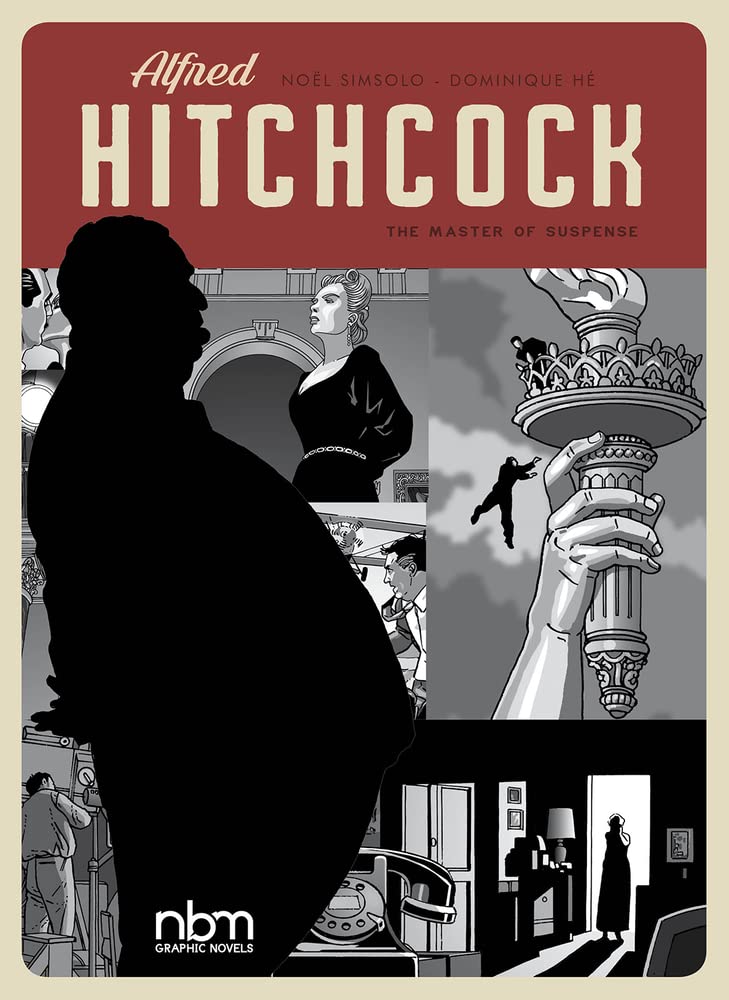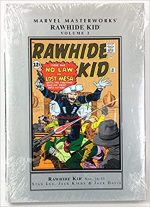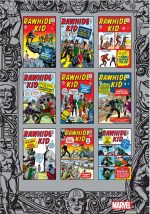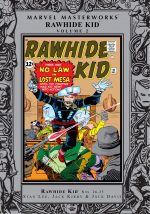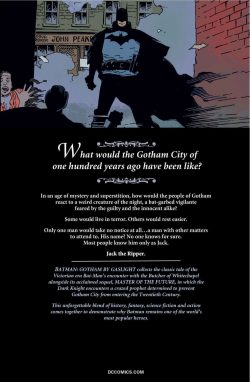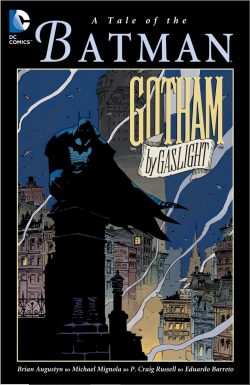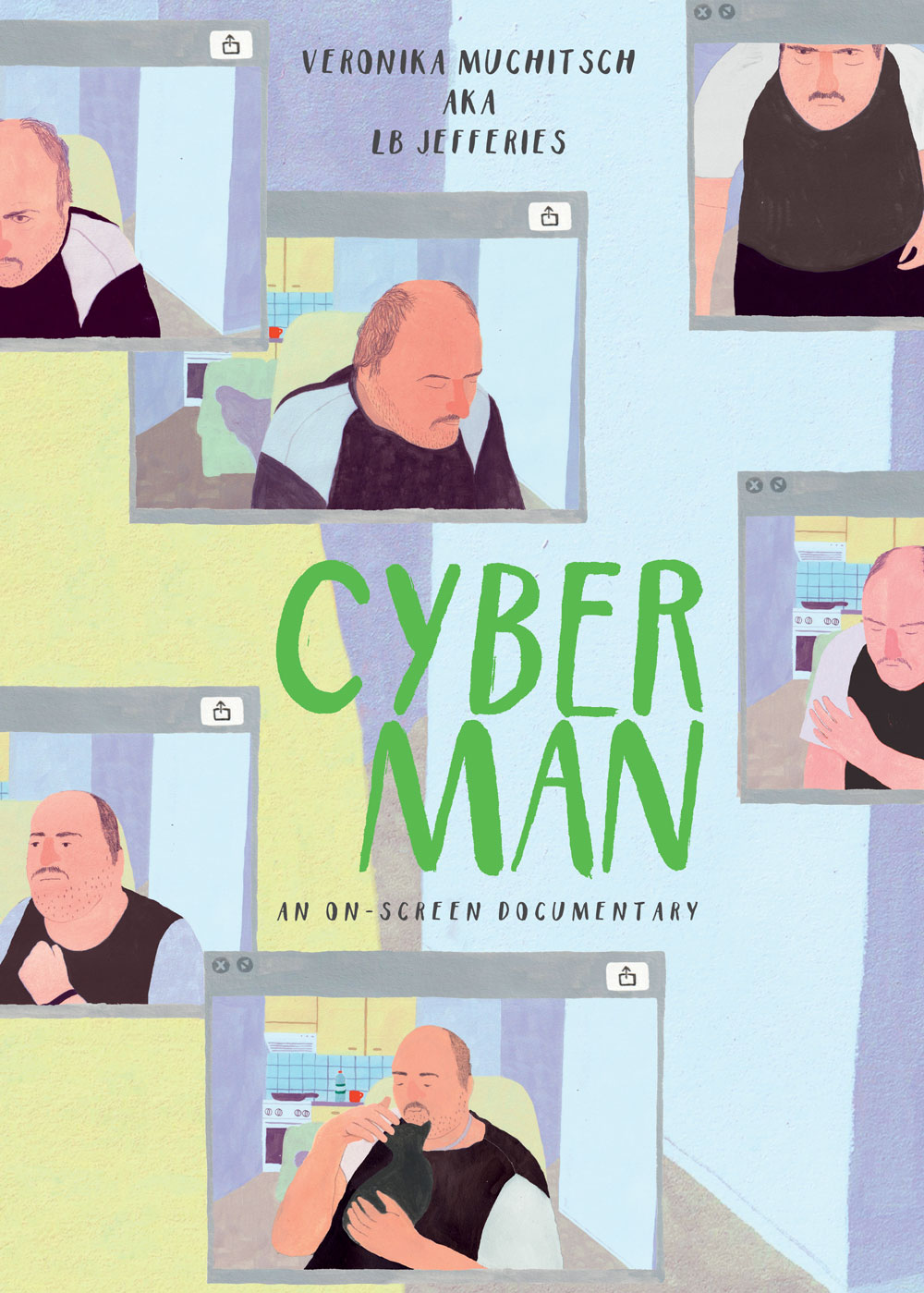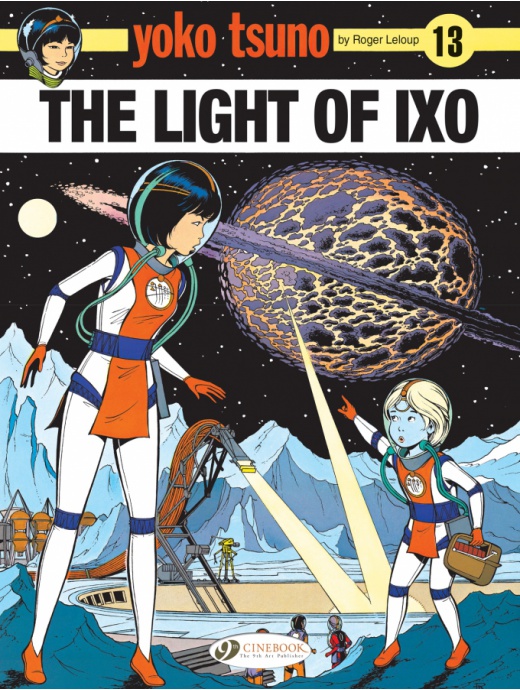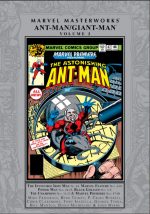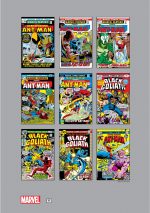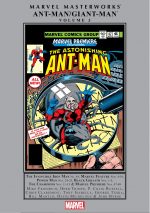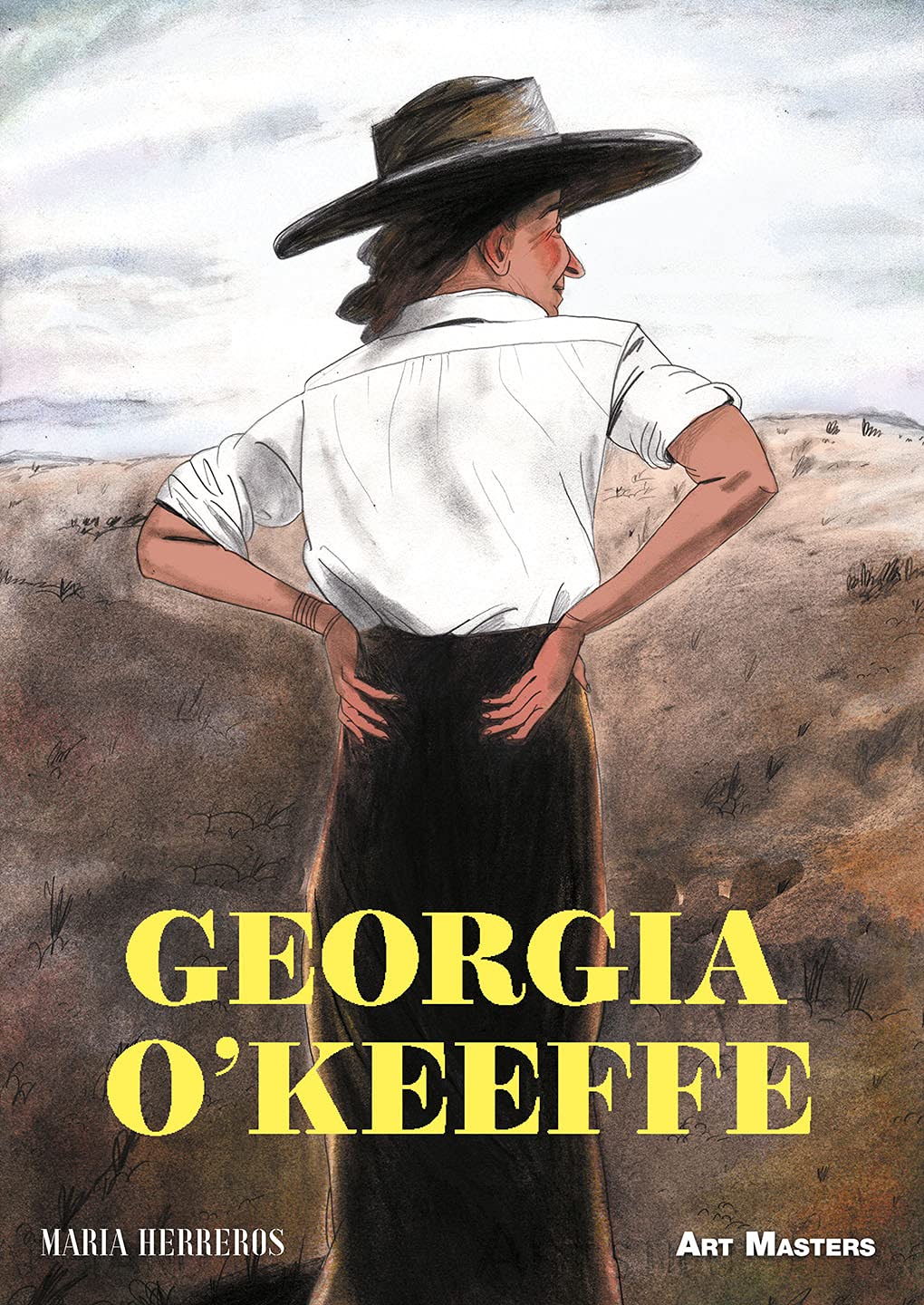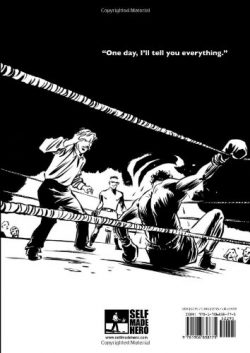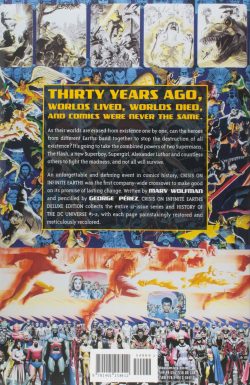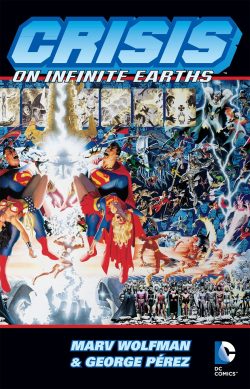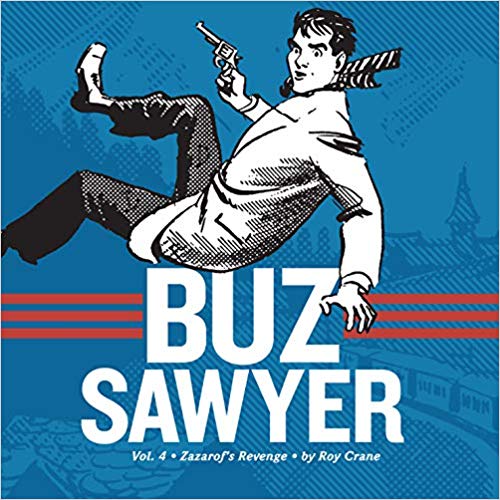
By Roy Crane, with Henry G. “Hank†Schlensker & Edwin Granberry (Fantagraphics Books)
ISBN: 978-1-60699-975-2 (HB)
Modern comics evolved from newspaper strips: pictorial features that were, until relatively recently, utterly ubiquitous. Hugely popular with the public and highly valued by publishers who used them as a weapon to secure sales and increase circulation, strips seemed to find their only opposition in blinkered local editors who often resented the low brow art form, which cut into potential ad space and regularly drew complaint letters from cranks…
It’s virtually impossible for us today to understand the overwhelming allure and power of the comic strip – especially from the Great Depression to the end of the 1950s. With limited television, broadcast radio far from universal and movie shows at best a weekly treat for most folk, household entertainment was mostly derived from the comics sections of daily and especially Sunday Newspapers. “The Funnies†were universally enjoyed recreation for millions who were well served by a fantastic variety and incredible quality of graphic sagas and humorous episodes.
From the start comedy was king; hence our terms “Funnies†and “Comicsâ€. From these jest and stunt beginnings – blending silent movie slapstick, outrageous fantasy and vaudeville antics – came an entertaining mutant hybrid: Roy Crane’s Wash Tubbs.
Debuting in April 1924, Washington Tubbs II was a comedic, gag-a-day strip which evolved into a globe-girdling adventure serial. For years, Crane spun addictive high-quality pictorial yarns – until his introduction of moody swashbuckler Captain Easy ushered in the age of adventure strips with the landmark episode for 6th May, 1929.
This led to a Sunday colour page which was possibly the most compelling and visually imaginative of the entire Golden Age of Newspaper strips (see Roy Crane’s Captain Easy, Soldier of Fortune: The Complete Sunday Newspaper Strips volumes 1-4). Improving almost minute by minute, it benefited from Crane’s relentless quest for perfection. His fabulously imaginative compositional masterpieces attained a timeless immediacy that made each page a unified piece of sequential art. The influence of his pages can be seen in the works of near-contemporaries like Hergé, giants-in-waiting such as Charles Schulz or comic book masters Alex Toth, John Severin and many more.
The material was obviously as much fun to make as to read. In fact, Crane’s cited reason for surrendering the Sunday strip to his assistant Les Turner in 1937 was NEA/United Features Syndicate’s abrupt and arbitrary diktat that all strips would henceforward be produced in a rigid panel-structure to facilitate their being cut up and re-pasted as local editors dictated.
They just didn’t lift the artist any more so he stopped making them. At the height of his powers, Crane walked away from the astounding Captain Easy Sunday page; concentrating on the daily feature until his contract expired in 1943 whereupon he left United Features: lured away by that grandee of strip poachers William Randolph Hearst.
The result was an aviator strip set in then-ongoing World War II: Buz Sawyer.
Where Wash Tubbs was a brave but largely comedic Lothario and his pal Easy a surly, tight-lipped he-man, John Singer “Buz†Sawyer was a joyous amalgam of both: a handsome, big-hearted, affable country-boy who went to war because his country needed him…
Buz was a fun-loving, skirt-chasing, musically-inclined pilot daily risking his life with his devoted gunner Rosco Sweeney: a bluff, brave ordinary Joe – and one of the most effective comedy foils ever created.
The wartime strip was – and remains – a marvel of authenticity: portraying not just action and drama of the locale and situation but crucially also capturing the quiet, dull hours of training, routine and desperate larks between the serious business of killing and staying alive. When the war ended the action-loving duo – plus fellow pilot/girl-chasing competitor Chili Harrison – all went looking for work that satisfied their thirst for action and adventure…
Crane had mastered popular entertainment tastes, blending adventure with drama and sophisticated soap opera, all leavened with raucous comedy in a seamless procession of unmissable daily episodes. He and his team of assistants – which over decades comprised co-writers Ed “Doc†Granberry, Clark Haas and Al Wenzel, and artists Hank Schlensker, Joel King, Ralph Lane, Dan Heilman, Hi Mankin & Bill Wright – soldiered on under relentless deadline pressure, producing an authentic and exotic funny romantic thriller rendered in his stark signature style as well as a prerequisite full-colour Sunday page.
This fourth stout and sturdy hardcover edition is a mostly monochrome tome re-presenting more magnificent strip shenanigans starring a dynamic All-American good guy, but now Buz is just another fading war hero: albeit admittedly a globetrotting, troubleshooting one and a newlywed husband to boot.
Having – after much kerfuffle, procrastination, intrigue, bloodshed, sexy skulduggery and delay – finally married extremely understanding childhood sweetheart Christy Jameson, our clean-cut boy-next-door then dragged her into his regularly perilous and frequently lethal working world as prime problem-solver for Frontier Oil: a company with fingers in many international pies and one most modern readers will find hard to consider “the Good Guysâ€â€¦
These strips – made in collaboration with Granberry & Hank Schlensker – cover the societally turbulent period spanning July 1949 to June 1952, as America leaned hard into its dreams of Exceptionalism and enjoyed domestic boom times while embracing it’s self-appointed role as the World’s Policeman. Crane and his creative laboured long, hard, often acrimonious hours to produce each daily strip; all beguilingly rendered in black-&-white through Crane’s masterly techniques employing line art and craftint (a tricky mechanical monochrome patterning effect which added greys and halftones to produce miraculous depths and moods to the superb base drawing) but the toll was heavy on personnel and feelings.
Before the ten self-contained tales here kick off, heavily-illustrated preliminary prose piece ‘The Three of Us are a Team’ (‘remarks at the New York Banshee Society’ from transcripts donated to Syracuse University) revisits Crane’s acceptance speech on winning the 1961 Silver Lady Award as determined by a collation of contemporary communications executives. Effusive and reminiscent, it sees him give his partners all the credit for the hard work in crafting the feature…
Buz Sawyer began on November 1st 1943 and ran until 1989. Crane officially retired with the April 21st 1977 episode (dying on July 7th) while it continued under Granberry, Schlensker, Haas, Wenzel and John Celardo until cancelation on October 7th 1989.
The story resumes with an example of contemporary trends…
Chimpanzees were becoming a popular story addition for most media as the 1940s ended (just look at movies or comic books) and ‘Monkey Business’ finds our happy couple back in the USA after an African honeymoon (of sorts) which left the them owners of a young chimp named Junior…
Anticipating decades of future sitcoms, the tale details how Junior plays up during a critical dinner party/holiday weekend held by Sawyer’s boss Colonel Harrison but the resulting debacle at a swish soiree on Harrison’s palatial estate fails to impress potential business partner Mr Tidley Bragg. A cheeky excuse for manic screwball comedy and social gaffes, the chaos generates explosive hilarity, humiliation and Buz’s sacking before fate intervenes to show everyone that Junior was a boisterous blessing in disguise…
Swiftly rehired, Buz heads south, encountering ‘Revolution’ (September 19th 1949 – January 18th 1950) in a Central American republic. Frontier Oil was seeking an oil concession, but apparently their agent – Barstain – had played a double game. Before long, Buz is using his war experiences to lead a counter revolution to save democracy…
January 20th- June 17th offers a grimly chilling change of pace as ‘Buz Alone’ sees Christy and her husband on a well-earned vacation at a Florida honeymoon cottage. Tragically, danger is never far from them, and the brief idyll is shattered after a nature-watching boat trip leaves them stranded on a sandbar with no food, water, shelter or prospect of rescue.
A true champion, Buz survives a gruelling swim to the mainland and returns in a seaplane only to find three men on the sandbar and no trace of Christy. When he gets agitated, he’s accused of making it all up and – if she ever existed – doing away with the woman…
Beaten up when he tries to search their boat, Buz is left to pick up the pieces and track down Christy. In his hunger for clues, he is manipulated by a woman seeking a new husband – and someone to remove her current one – before eventually clashing with vengeful old enemy Harry Sparrow. At no time does he ever get near his missing better half…
While he flounders, a comely, capable lady with no memory is picked up on the mainland before losing herself amidst the sleazy local underworld. With the police now assisting, Buz sets out on the fresh trail, aided by trusty pal Sweeney. After more trauma and tribulation, Christy is found, but it’s not the girl Buz married yet – not by a long shot…
A return to lighter intrigue and enterprise comes when spoiled debutante ‘Diana’ (June 19th – November 24th) makes Daddy find her a job. Unluckily for Buz, Remington Chase is a bigwig at Frontier and his bored hellion of a daughter likes the idea of being Sawyer’s secretary – or at least the idea of Sawyer…
Even debonair Chili Harrison can’t sway her aim and when Buz “escapes†into work – despatched to Iron Curtain nation Sovmania just when he and Christy began looking at homes to buy – Miss Chase infuriatingly follows. Negotiating with the Soviets is tricky enough, but when it’s a US corporation demanding the communists hand back wells and refineries they illegally annexed and expropriated, Sawyer knows he can’t win and may end up mysteriously deceased. It’s no surprise to find Diana draws attention and danger like a magnet, but her response when the oppressors decide to arrest them is a life-changing revelation.
Spectacular spy games give way to a lighter interlude when Buz reunites with Christy and they babysit a parrot named ‘William Shakespeare’ (November 24th 1950-January 6th 1951). The beloved baby of a poetry professor, with an astounding talent for repeating what he hears, the bird proves to be even more trouble that their chimp was…
Clearly qualified in policing difficult customers, Buz is then assigned to locate a wandering landowner with 6,000 prime acres to lease. ‘Wish Jones’ (January 8th to April 19th) is old, homely, rich, romantic, suggestible and (suddenly) married to exotic dancer Taffy Fawn. However, he hasn’t signed the contracts Frontier needs, leaving Buz playing catch across all the love nests of the South Pacific. The fixer’s greatest asset is Taffy herself, who never thought wedded bliss and matchless wealth included so much sand, birds or bugs. His biggest problem is that even desert island paradises have crooks, radios and newspapers…
Another episode of animal husbandry catastrophes – this time a dachshund and a voracious baby heron – leads implausibly to a sojourn in ‘Alaska’ (26th April – August 22nd) with Sawyer undercover as John Singer.
While seeking a geologist’s killers, he’s also acting as courier for the Government in a serious and solid spy escapade worthy of Alfred Hitchcock with abductions, misreported deaths, murderous sailors, devious twins, fake relatives and hidden uranium reserves all in play, with Buz’s survival skills pushed to the limit before his mission is accomplished.
In dire need of relaxation, the reunited Mr & Mrs Sawyer trust to fate and pluck a name out of an atlas for a vacation. They land in a lakeside resort boasting peace and quiet but dreary ‘Doldrums’ (August 23rd – September 29th) is soon a pandemonium of envy and excitement as bored couples seek to spice up their passionless lives by emulating the infamous, glamorous newcomers…
Eponymous epic ‘Zazarof’s Revenge’ spans October 1st 1951-January 10th 1952, opening with a global sabotage campaign against Frontier, leading Buz to Switzerland where there’s no doubt of mystery man Igor Zazarof‘s guilt, but apparently no way to find or face him.
Ultimately, persistence and charm break down the villain’s obvious pawn Neri, whilst all attempts to bribe, frame, frighten or kill the American fail, leading to an extended and brutal duel to the death on a mountain peak as the only way to deal with Sawyer…
We conclude for now with home-grown bad men ‘The Hawks Boys’ (January 10th – June 19th) terrorising and sabotaging a Frontier installation in Utah. As assault escalates to murder, Buz discovers why the Hawks’ – already well-paid for the oil rights to their land – are doing everything they can to force the company to pull out. What could be worth more than oil and what won’t they do to keep their secret?
Completing this vivid vintage venture is a wry glimpse of Crane’s early days. With text written by Jeet Heer, ‘A Cartoonist’s Travels’ offers a brief gallery of cartoons about bums, hoboes, tramps and voyagers, with the artist drawing upon his own youthful experiences as an itinerant bindlestiff and drifter…
This a sublime slice of compelling comics wonder is an ideal way to discover or reconnect with Crane’s second magnum opus. Bold, daring, funny and astonishingly enthralling, these episodic exploits influenced generations of modern cartoonists, illustrators, comics creators and storytellers. The series ranks amongst the very greatest strip cartoon features ever created: always delivering comics tale-telling unforgettable, unmissable and utterly irresistible. Try it and see for yourself.
Buz Sawyer: Zazarof’s Revenge © 2016 Fantagraphics Books. All Buz Sawyer strips © 2016 King Features Syndicate, Inc. All other material © the respective copyright holders. All rights reserved.
